Who doesn’t love cool, crisp cucumbers? They’re a very common crop in the home vegetable garden, but what are the plant’s growth stages? And how long does each life cycle stage take?
The 6 life stages of the cucumber plant include seed germination, plant growth, flowering, pollination, fruit growth, and harvesting. For you, the grower, the first stage is sowing and the final is harvesting. Most cucumber varieties take 55 – 70 days from germination to harvest.
It’s not hard to grow your own cucumbers. Before you begin, though, it helps to know something about the stages of the plant’s life. Otherwise, you might be left wondering why so many bright flowers are appearing on your plant, why some of these flowers wither and fall, and when to harvest the fruit.
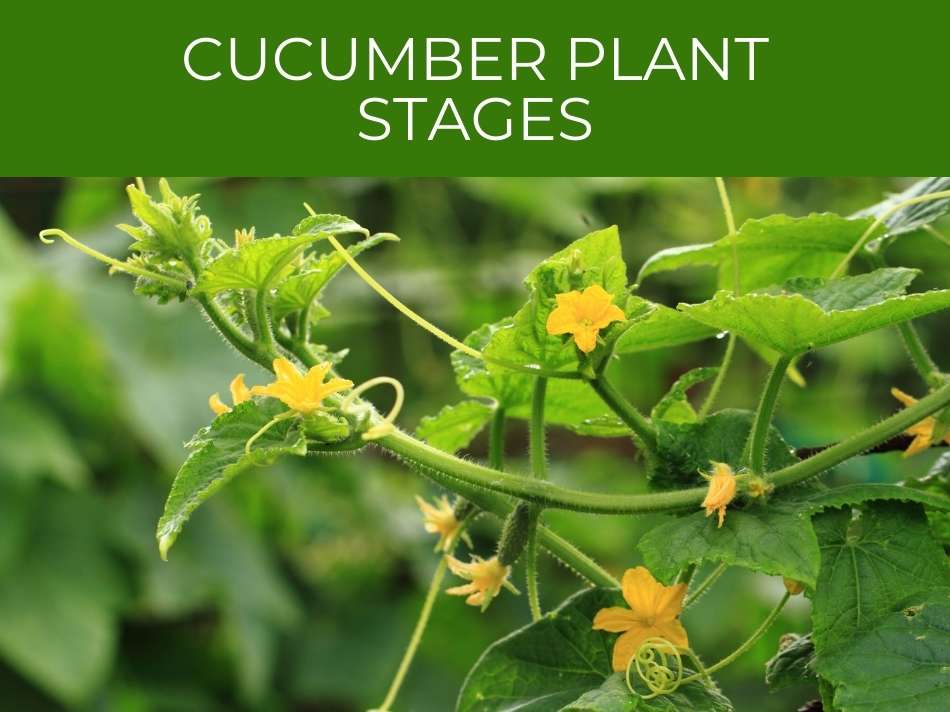
Cucumber Plant Stages
The process begins when you sow the seeds.
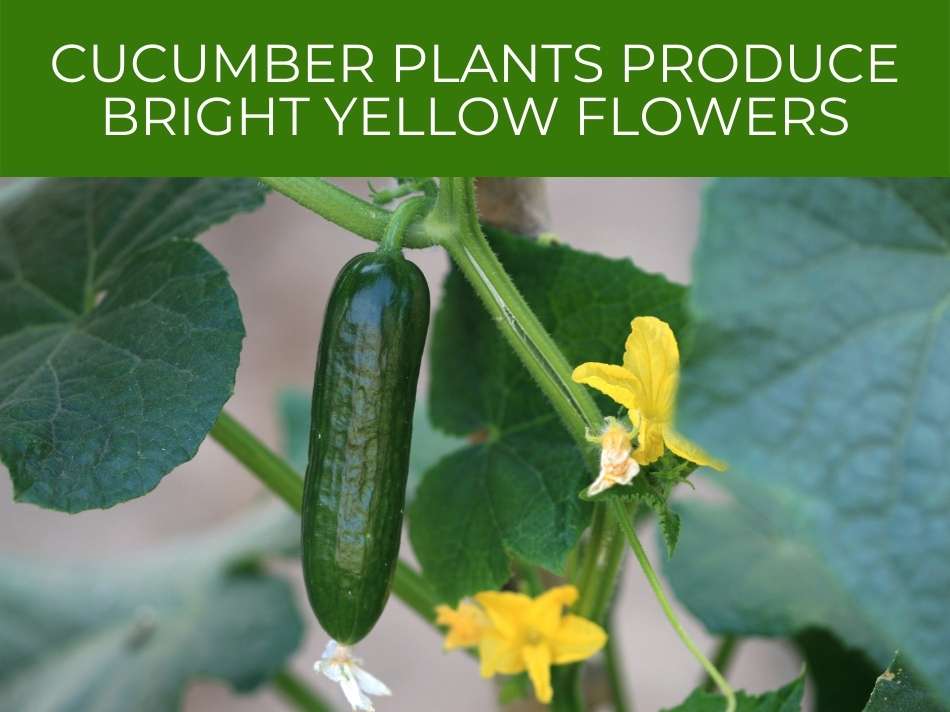
After germination, and during the growth stage, cucumber plants produce bright yellow flowers. These flowers are used in the pollination stage, and the female flowers will then produce fruit that will be ready for harvesting when it’s reached its mature size–usually in 55-70 days.
Cucumbers should never be sown outdoors until all danger of frost has passed.
The time that it takes the seeds to germinate depends on soil and weather conditions, but they generally germinate within seven to 10 days.
Once the seedlings have emerged, the plant’s growth cycle begins. It can grow either as a bush or as a vine, depending on the variety that you planted.
Find out how cold cucumber plants can tolerate.
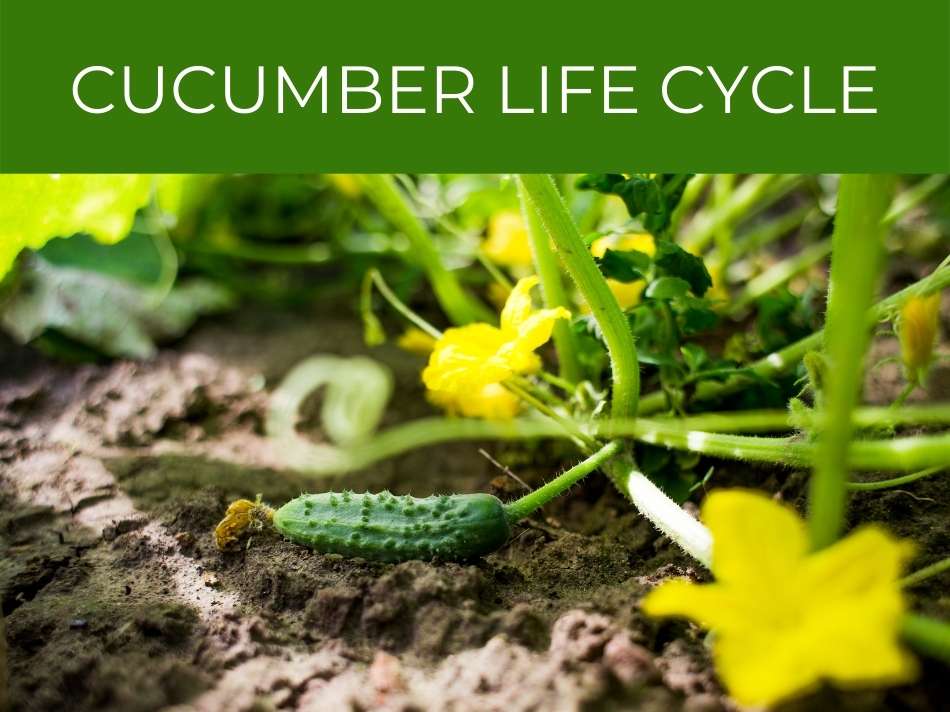
Cucumber Life Cycle
Your cucumber’s life cycle begins when you sow the seeds, so to speed up germination make sure that you follow directions on the packet.
The cucumber’s life cycle includes germination, growth, flowering, pollination, and fruit production. The process begins when you sow the seeds, and the cucumber plant can complete its cycle in as little as 55 days.
Cucumber plants come in many varieties. Some plants grow as bushes while others are vines, and some plants are fairly compact while others can be very large.
The fruit size also varies. Some produce very small fruit intended for pickling while others, which are intended for slicing, can grow about eight inches long.
Growing Stages of Cucumbers
You know that growing vegetables from seeds requires some time and patience.
The growing stages of the cucumber include germination, production of true leaves, growth, flowering, pollination, and fruit production. How long these stages take depends on weather, soil conditions, and on the cucumber variety.
There are many varieties, and exactly how long it takes the plant to grow depends partly on the variety.
See our complete guide to how much sun cucumbers need.
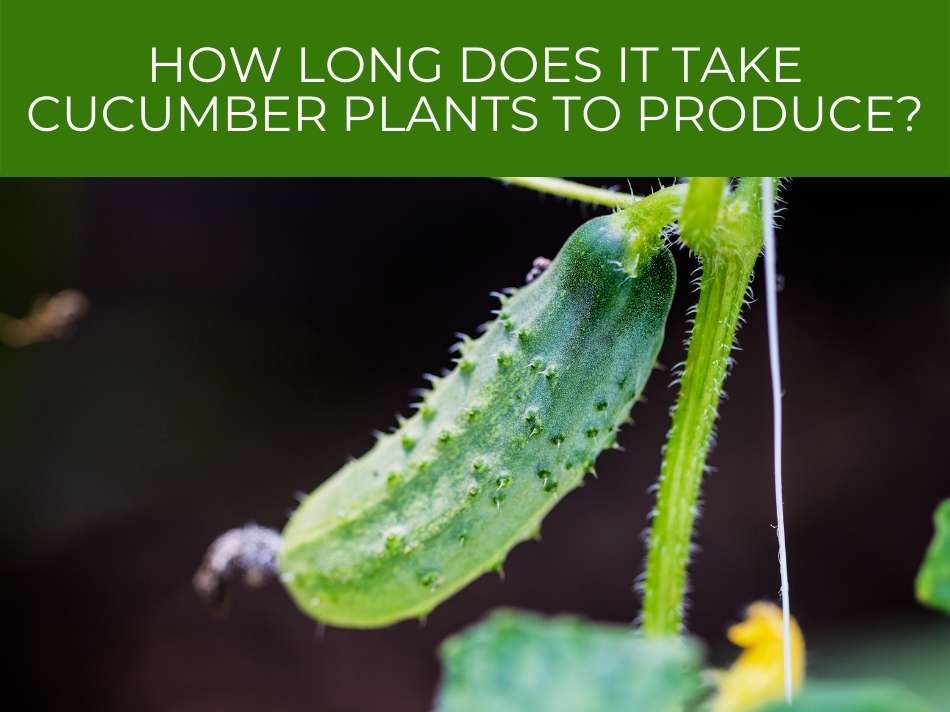
How Long Does It Take Cucumber Plants to Produce?
But exactly how long will it be before you can start enjoying the fruits of your labor?
It takes about 55 up to 70 days after germination for a plant to produce fruit that is ready to harvest. In cooler weather, the plants might grow a little more slowly and reach production later. In warmer weather, the plants might grow faster.
Exactly how long it will take depends on soil and weather conditions.
Cucumbers do best in very warm weather, and they profit from consistent watering and good drainage.
Remember, too, that it takes a week or 10 days for your seeds to germinate after you’ve planted them.
See our guide for how far apart to plant cucumbers.
Some varieties of cucumbers also produce faster than others.
Many varieties produce both male and female flowers.
The male flowers, which bloom before the females do, don’t produce fruit.
The male flower’s only purpose is to pollinate the female,and after pollination, it’ll wilt and fall to the ground.
So, don’t be alarmed if some of the blooms begin wilting and dropping from your plant.
But what happens after the female flowers appear?
Soon, usually within a few days, you’ll see the young fruit start to appear.
You can speed up the season by starting the seeds indoors in the early spring.
See our complete guide to transplanting cucumbers.
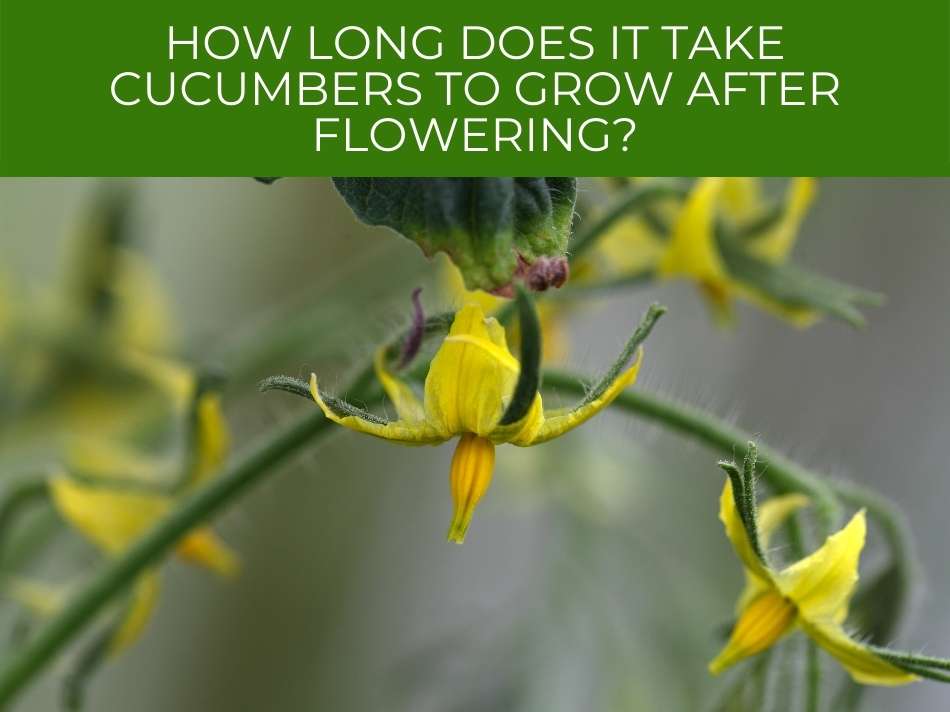
How Long Does It Take Cucumbers to Grow After Flowering?
You’ve cared for your plant all summer, but when will you get to enjoy the fruits of your labor?
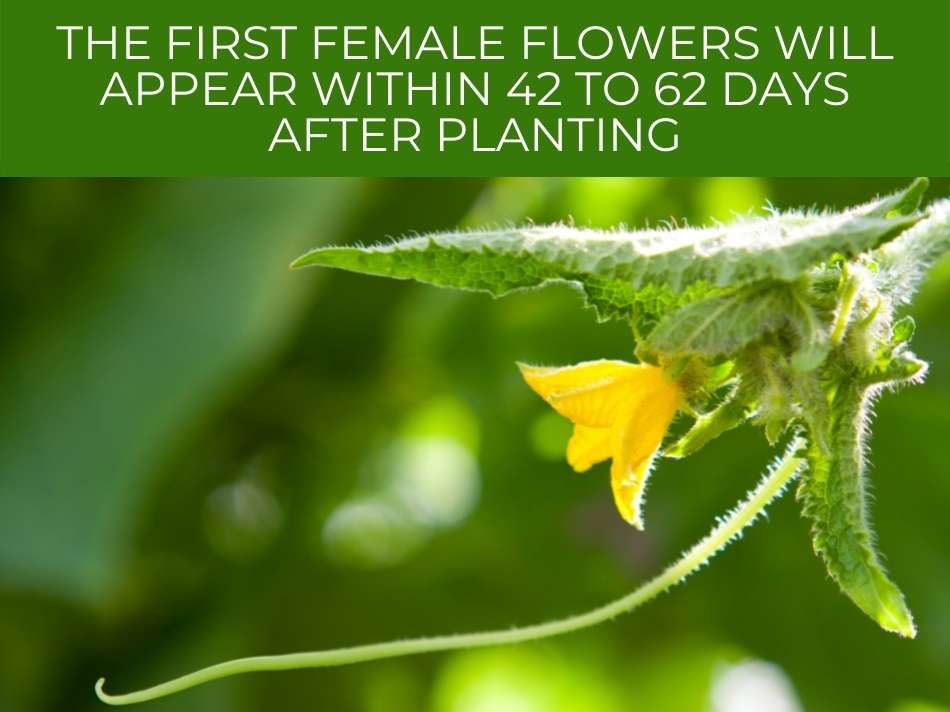
The first female flowers will appear within 42 to 62 days after planting. From then, it takes about 10 days to produce fruit. Some plants produce only female flowers, while others will first produce male flowers, which pollinate the female flowers.
The young fruit will begin to grow and mature quickly, and you want to check it daily to assure that you harvest it at the proper time.
This is perhaps the most important stage of the season.
See our complete article on why cucumbers die and how to fix the problem.
You want your cucumbers to reach their mature size, but you want to harvest while they’re still young and firm for maximum enjoyment.
Find out how to tell when to pick cucumbers.
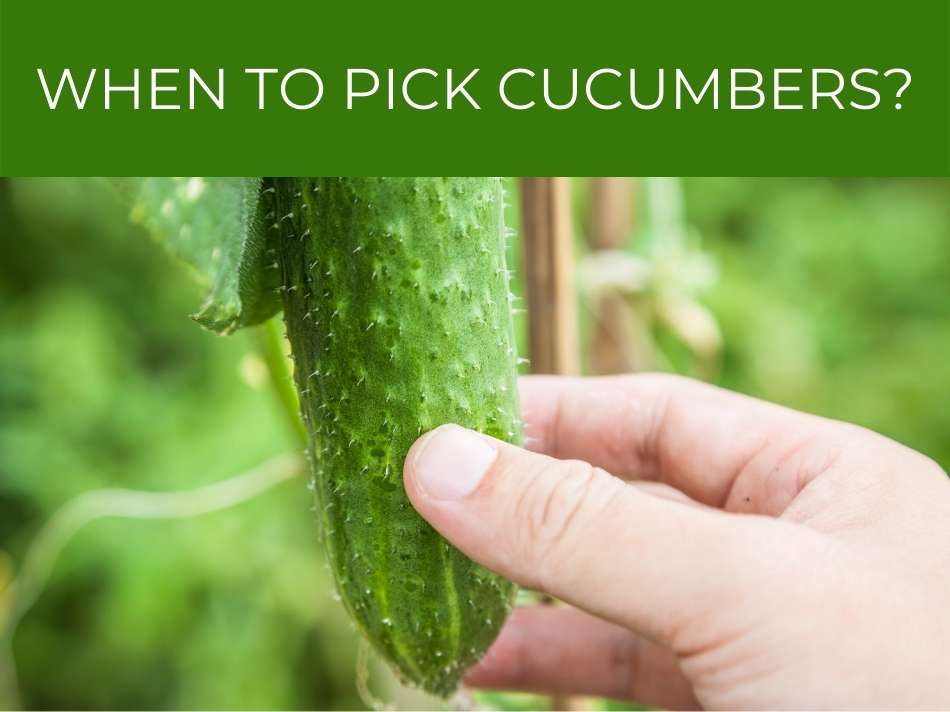
When To Pick Cucumbers?
The answer to that question depends on the variety of cucumber.
Are you growing cucumbers for pickling or for slicing?
Is the optimal color for your variety a vivid green, or is it intended to have a slightly yellow or pale tint?
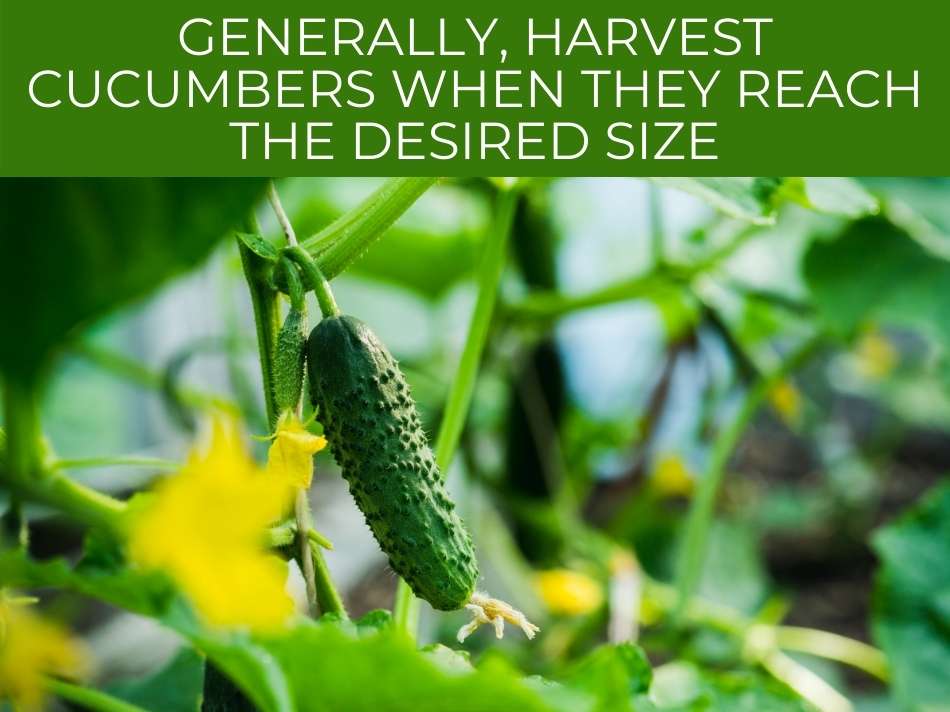
Generally, harvest cucumbers when they reach the desired size. This is 3 – 4 inches for pickling cucumbers, and 7 – 8 inches for most slicing cucumbers. Don’t let your cucumbers become soft or overgrown.
Pay attention to the cucumber’s texture.
Cucumbers should be harvested when they are still fairly young, and these young fruits will feel firm when you squeeze them.
The color can vary a little according to the variety.
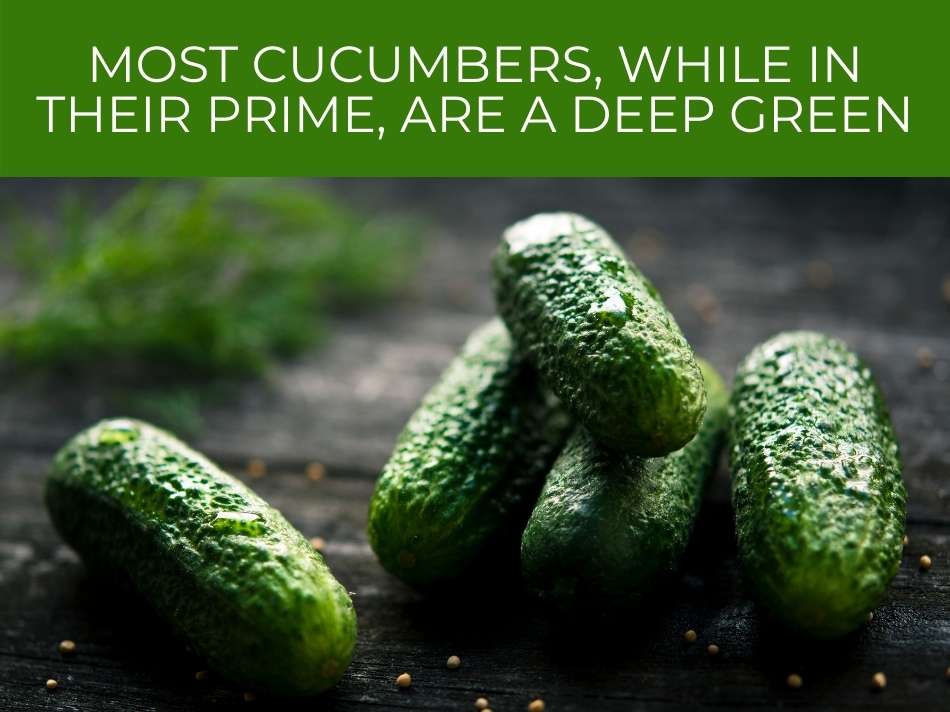
Most cucumbers, while in their prime, are a deep green.
However, some, including the lemon cucumber or the apple cucumber, may be a very pale green with a slight yellowish hue.
The important thing to remember is that you want to harvest often.
Don’t let the cucumbers get too mature, because old cucumbers can be flabby and have a bitter taste.
You want your cucumbers crisp for salads and sandwiches.
You also want to remember to refrigerate your cucumbers as soon as possible after they’re harvested.
If it’s not possible to get them into the refrigerator immediately, immerse them in cold water until they can be refrigerated.
Frequent harvesting will encourage the plant to produce more fruit, and this extends your production season.
Plants that are left too long unharvested will soon cease production, and the vines may begin to wither.
Cucumber plants are tender annuals that dislike cool weather.
Their production will decline as the nights begin to get cool in the early fall, and soon the plants will begin to wither and die.
Don’t grieve, though.
They’ve lived out their life span, and you can plant more next year!

Conclusion
Cucumbers are a delight for everyone.
Depending on the variety, they can be used either for pickling or for slicing.
The slices are good served by themselves or with a dip, or they can be combined with other greens to make salads.
So, cucumbers are very versatile, and they can be easy to grow.
It’s important, though, to understand a little about the cucumber plant stages.
Sow after all danger of frost is past, and the seed should germinate within seven to 10 days.
From there, the process includes growth, flowering, and fruiting. Within 55 to 70 days, you will likely be cutting your first cucumber.

